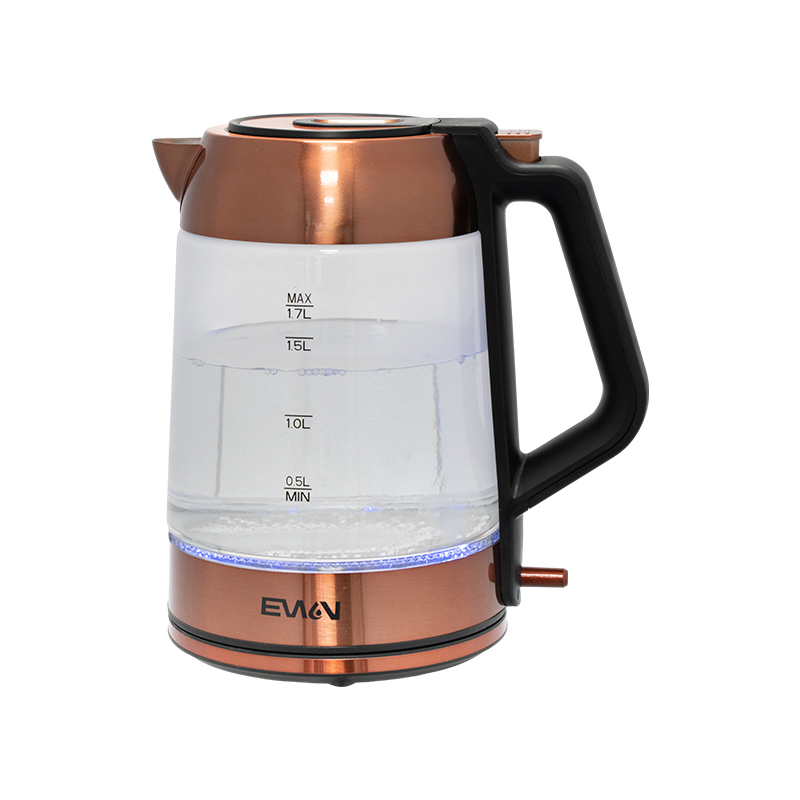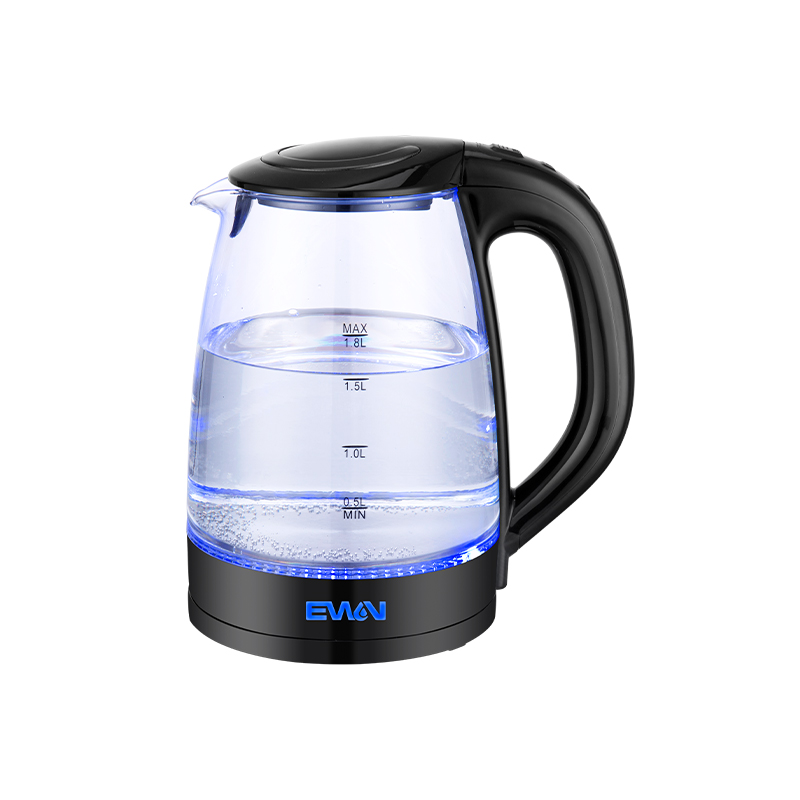+86-18667862027
Web Menu
Product Search
Exit Menu
What are the differences in impact resistance between different types of glass kettles?
Classification of Different Types of Glass Kettles
Glass kettles are primarily categorized by material: ordinary soda-lime glass, high-borosilicate glass, and tempered glass. Ordinary soda-lime glass is widely used in everyday, low-cost utensils. Its manufacturing process is relatively simple, but its thermal shock resistance and mechanical strength are relatively low. High-borosilicate glass, with the addition of boron during production, exhibits excellent resistance to temperature fluctuations and can withstand the stress changes caused by alternating hot and cold temperatures. Therefore, it is widely used in hot drink kettles and tea sets. Tempered glass kettles utilize physical or chemical strengthening of the surface structure, significantly improving their mechanical strength and impact resistance. They are often used in applications requiring high safety. Different materials directly affect the kettle's impact resistance, so the choice should be considered based on the intended use.
Impact Resistance of Ordinary Soda-Lime Glass Kettles
Ordinary soda-lime glass kettles are common in everyday use, but their impact resistance is relatively limited. Due to its high coefficient of thermal expansion, soda-lime glass is prone to stress concentration when exposed to large temperature fluctuations, leading to cracking or breakage. Furthermore, this type of glass has low resistance to external impact, especially in stress-concentrated areas like the edges and bottom, which can break even with minor bumps. Therefore, this type of kettle is more suitable for use in low- or room-temperature environments, such as cold drinks or room-temperature water, and should not be subjected to frequent hot and cold cycles or strong impacts.

Impact Resistance of Borosilicate Glass Kettles
Due to its low coefficient of expansion and high chemical stability, borosilicate glass offers more reliable impact resistance. This type of kettle can withstand large temperature fluctuations, suitable for switching between ice and boiling water. It is commonly used in heat-resistant kettles, flower teapots, and coffee pots. While borosilicate glass is not completely shatterproof, its more uniform structure makes it less susceptible to crack propagation when subjected to external impact, which improves its durability to a certain extent. In daily use, this type of kettle maintains structural stability even under large temperature fluctuations, reducing the risk of breakage.
Impact Resistance of Tempered Glass Kettles
Tempered glass kettles undergo high-temperature heating and rapid cooling, creating a compressive stress layer on the surface, thereby enhancing impact resistance. This type of kettle can withstand significant external forces and is resistant to shattering when dropped or impacted. Even if broken, the fragments are blunt-angled, making it relatively safer. Therefore, tempered glass kettles are widely used in restaurants, public spaces, and homes where safety is paramount. However, it's important to note that once microcracks develop, the overall structure of tempered glass can quickly fail. Therefore, avoid using the kettle after surface damage.
Comparative Analysis of Different Types of Glass Kettles
To more clearly understand the differences in impact resistance between different types of glass kettles, refer to the table below:
| Type | Thermal Shock Resistance | Mechanical Impact Resistance | Applicable Scenarios |
| Ordinary Soda-Lime Glass Kettle | Low (approx. 40–60 °C temperature difference) | Low | Cold drinks, room temperature water |
| High Borosilicate Glass Kettle | Medium-High (approx. 120–150 °C temperature difference) | Medium | Hot drinks, flower tea, coffee |
| Tempered Glass Kettle | Medium (approx. 100 °C temperature difference) | High | Public places, households |
This comparison shows that borosilicate glass performs better in thermal shock resistance, while tempered glass is more resistant to mechanical shock. Ordinary soda-lime glass performs poorly in both areas and is more suitable for everyday use where impact resistance is less critical.
The Relationship Between Impact Resistance and Thickness
In addition to the material, the thickness of a glass kettle also has a direct impact on its impact resistance. Thicker glass walls disperse external forces, reduce localized stress concentrations, and thus improve impact resistance. However, excessively thick glass increases weight and compromises ease of use. Therefore, design often requires a balance between strength and practicality. Borosilicate and tempered glass kettles generally offer superior impact resistance to ordinary glass at comparable thicknesses, which is one reason they are widely used.
The Impact of Impact Resistance and Processing
Processing also determines the impact resistance of a glass kettle. For example, tempered glass significantly improves its mechanical strength through physical strengthening. Borosilicate glass, by controlling its expansion coefficient during the raw materials and firing process, enhances its resistance to thermal shock. Furthermore, designs like chamfered edges and a thickened bottom can reduce the risk of cracking in stress-concentrated areas, improving overall durability. Therefore, when purchasing a glass kettle, in addition to the material itself, it's important to pay attention to the process design and manufacturing details.
Precautions for Using Different Types of Kettles
Differences in impact resistance dictate that different types of glass kettles require different protective measures during use. Ordinary soda-lime glass kettles should be protected from extreme temperature fluctuations and strong impacts, and should not be heated directly over open flames or induction cooktops. While borosilicate glass can withstand large temperature fluctuations, it still needs to be protected from violent impacts with hard objects. Although tempered glass is more impact-resistant, once cracked, it should be replaced promptly to avoid the risk of breakage due to failure of the internal structure.
address
No.935 Qiye Road, Zhouxiang Town, Cixi City, Zhejiang Province, China
Sale’s Email
leila@nbewin.com
sales8@nbewin.com
sales9@nbewin.com
Copyrighte Ningbo Ewin Electrical Appliances Co., Ltd. All Rights Reserved.











